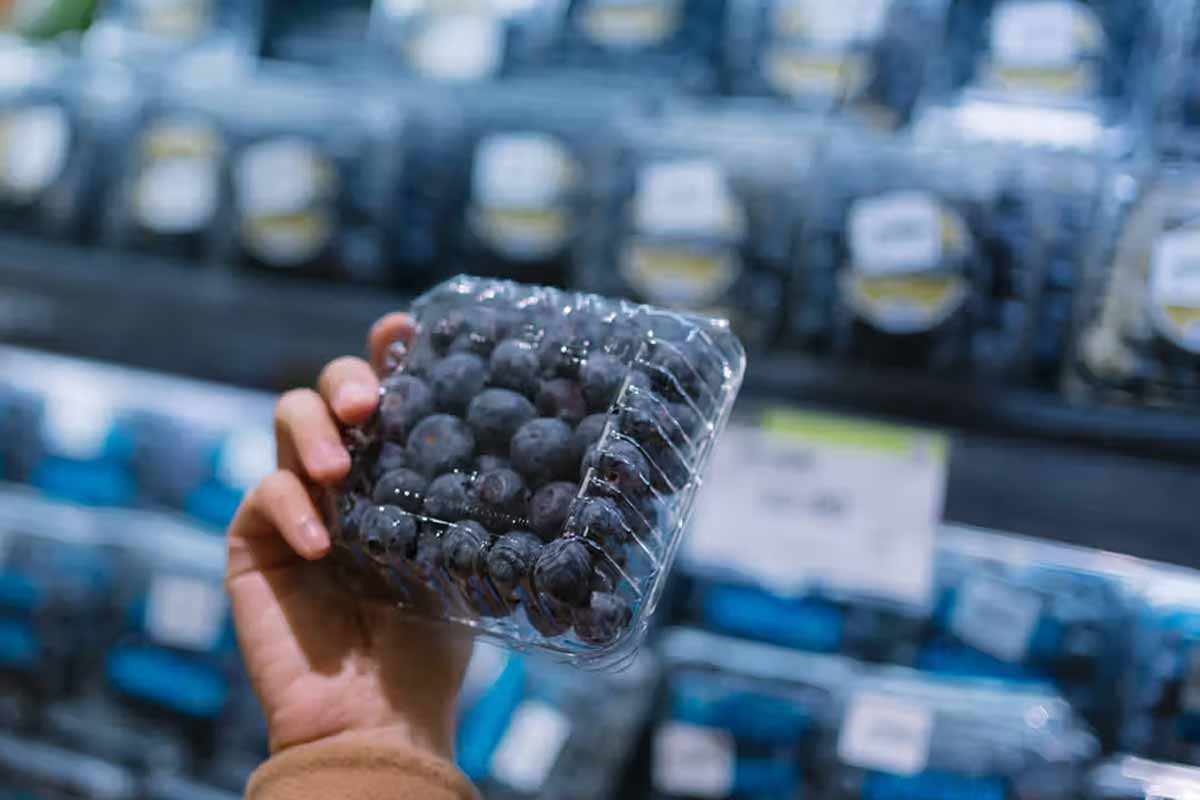Blueberry recall news travels fast, and this one lands close to the breakfast table. You picture a bowl, a spoon, and a pause you didn’t plan. Food safety rarely feels personal until it does. So let’s unpack what happened without the panic. Just clear facts, a little context, and a steady tone.
What Triggered the Alert
A Georgia producer, Alma Pak International LLC, pulled the brake first. They initiated a voluntary action after routine testing flagged Listeria monocytogenes on a batch. The scope was tight: 400 boxes of organic blueberries, each weighing 30 pounds. Two lot numbers mark the batch: 13325 G1060 and 13325 G 1096. Dates matter here. The company moved on June 9. The FDA followed with a Class I risk label on July 1.
That’s the category reserved for products that could cause serious harm. Think worst-case planning, not guaranteed outcomes. In the swirl of posts and headlines, this is the heartbeat of the blueberry recall. A clear signal to investigate, document, and keep shoppers informed. No drama, just diligence in action. That’s how the system is supposed to work when food safety alarms ring.
Blueberry recall
What does a Class I label actually mean for your kitchen? It’s the FDA’s strongest alert, meant to catch attention fast. Listeria can make healthy people miserable and fragile people very ill. Milder cases look like a rough flu: fever, aches, nausea, vomiting, diarrhea. Tougher cases can bring headache, stiff neck, confusion, even loss of balance or seizures. Risk isn’t evenly shared across the crowd. Pregnant people, newborns, older adults, and those with weakened immunity face higher stakes.
That’s why a blueberry recall lands with weight, even when numbers are small. We talk about symptoms not to scare you, but to give you a checklist. If something feels off after eating a suspect product, call a professional. Most days, the body fends off trouble. On others, the right help at the right time matters.
Scope, Lots, and What Consumers Need
Here’s the part everyone asks first: did any berries reach carts? Alma Pak says the affected boxes were recovered before reaching retail shelves. Translation for your fridge: no product sold to consumers, no disposal required at home. Still, it helps to know the markers in case details shift. The lots in question carry those two identifiers mentioned above. Each box is industrial size, meant for distribution, not weekend shopping.
Routine testing caught the issue early, which is exactly why testing exists. This is the second beat where the blueberry recall shows its shape. Small perimeter, fast action, heavy paperwork, minimal disruption to ordinary kitchens. Food safety teams love that outcome: a clean catch behind the scenes. You keep eating breakfast in peace. Meanwhile, the system refines its playbook for next time.
Inside the Plant: What Changed After
The company didn’t stop at the pullback. They coordinated with federal and state teams and brought in outside expertise. Investigators traced possible sources and tightened controls across the facility. Environmental monitoring ramped up, including targeted “vector” sampling around tricky zones. Follow-up tests came back clean for Listeria monocytogenes after the push. That’s reassuring, though vigilance never clocks out in food plants.
Think of it like a deep clean paired with smarter routines. You want hearing-aid sensitivity in places like this, always listening for weak signals. Moments like this are where the blueberry recall leaves a quiet legacy. New guardrails, sharper eyes, fewer gaps for contamination to hide. No victory laps, just steadier habits baked into daily operations. It’s unglamorous work that keeps risk from snowballing.
What Experts Watch For Next
Listeria’s odd trick is chilling. It grows at refrigerator temperatures, which makes cold storage a double-edged sword. Cheeses and deli meats are usual suspects, though produce isn’t immune. So researchers watch the whole chain: soil, water, equipment, transport, and cold rooms. They study how tiny lapses compound when conditions line up just wrong. They also track who’s most vulnerable and how to protect them better. For you, the list stays simple and sane. Rinse produce under running water, even prewashed packs. Keep fridges cold and clean, wipe drawers, and mind use-by dates. If you’re pregnant, older, or immunocompromised, be extra choosy with high-risk foods.
That’s the daily, human side of a blueberry recall story. Not a fear campaign just the kind of care that adds up over time. Behind the headlines, scientists will keep mapping patterns and testing theories. Regulators will keep refining rules that sometimes feel fussy, yet keep you safe. And companies will keep sampling, swabbing, and proving their lines are ready. Most of that work stays invisible, which is how it should be. Food is meant to comfort, not distract you with worry.
When a batch stumbles, the goal is quick containment, clear reporting, and learning. On that count, this episode reads like a sober, useful drill. You can still love your morning bowl without side-eyeing every berry. If anything, this reminds us how many hands guard that simple pleasure. Quiet expertise. Transparent updates. And a system that can say, out loud, “we checked,” and show you the receipts. That’s the kind of calm we all want at the table. And it’s the calm good systems are built to deliver—one careful step at a time.
